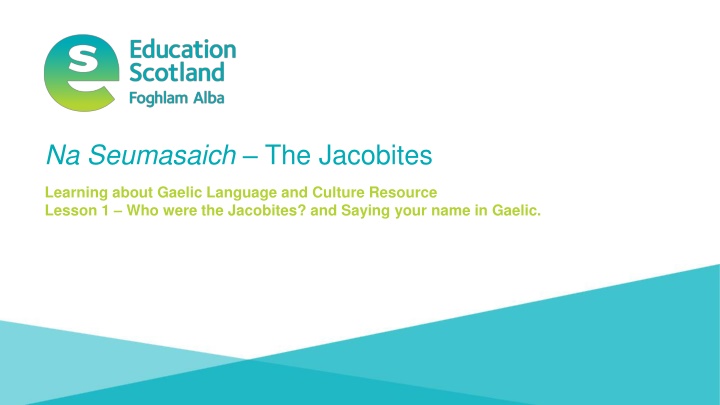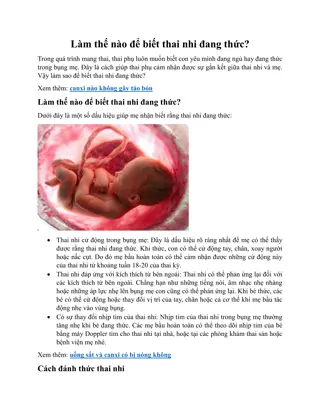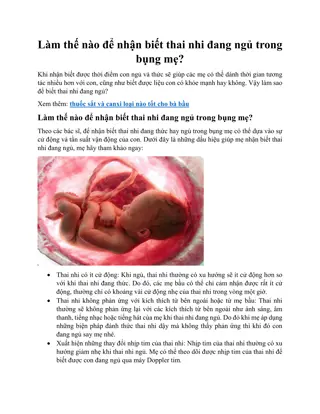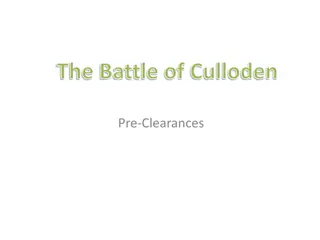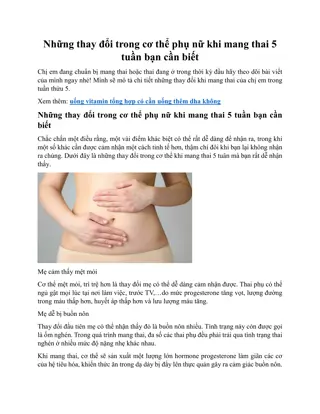Na Seumasaich–The Jacobites
Discover the history of the Jacobites, supporters of the Stuart Royal Family, and delve into Gaelic language and culture in this educational resource lesson. Learn about the origins of the Jacobites, how to say your name in Gaelic, and explore the significance of Gaelic names in Scotland. Uncover the connection between the Stuarts and the English Royal Family through marriages and understand the religious factors that influenced their rule in England and Ireland. Engage with common Gaelic names, clan systems, and more in this insightful lesson.
Download Presentation

Please find below an Image/Link to download the presentation.
The content on the website is provided AS IS for your information and personal use only. It may not be sold, licensed, or shared on other websites without obtaining consent from the author.If you encounter any issues during the download, it is possible that the publisher has removed the file from their server.
You are allowed to download the files provided on this website for personal or commercial use, subject to the condition that they are used lawfully. All files are the property of their respective owners.
The content on the website is provided AS IS for your information and personal use only. It may not be sold, licensed, or shared on other websites without obtaining consent from the author.
E N D
Presentation Transcript
Na Seumasaich The Jacobites Learning about Gaelic Language and Culture Resource Lesson 1 Who were the Jacobites? and Saying your name in Gaelic. For Scotland's learners, with Scotland's educators Do luchd-ionnsachaidh na h-Alba le luchd-foghlaim Alba
Na Seumasaich Lesson 1 In this Learning about Gaelic Language and Culture resource lesson we will learn: about the Stuart Royal Family and why their supporters were called Jacobites to say our name in Gaelic to ask someone their name in Gaelic to address someone by name in Gaelic about discrimination against Gaelic names about the clan system in the Highlands of Scotland some common Gaelic first names and surnames to create short texts about ourselves and others in Gaelic
Meet Miri and Calum Hal . S mise M iri. D an t-ainm a th ort? Hai a Mh iri. S mise Calum F ilte gu na Seumasaich a Chaluim Welcome to the Jacobites.
Whats a Jacobite? And why are they called Seumasach in Gaelic? A Jacobite was a supporter of the Stuarts, a royal family with Scottish origins, who eventually ruled the rest of Britain as well as Ireland. Why were they not called Stuartites then? Lots of Stuart kings were called James. The Latin for James is Jacobus so it became Jacobites. The Gaelic for James is Seumas so a Jacobite was a Seumasach. I d like to find out more about these Stuarts.
The Stuarts were originally called the Stewarts, (Sti bhart) because they were descended from the Stewards of Scotland. They had married daughters from the family of Robert the Bruce. The first Stewart king was also called Robert, but there were five James in a row before Mary, Queen of Scots. Is mise Raibeart Is mise Raibeart cuideachd Is mise Seumas Is mise Seumas Is mise Seumas Is mise Seumas Is mise M iri Is mise Seumas
The Stuarts were related to the English Royal Family due to marriage. When Queen Elizabeth I died with no heir (no child to take the throne), James VI of Scotland became James I of England as well in 1603. The last Stuart monarch, Queen Anne died in 1714. So who are all these guys, and how did they end up ruling England and Ireland as well? Is mise Te rlach cuideachd Is mise Seumas Is mise Te rlach One of the main reasons was the same reason they became kings of England in the first place. Religion! That s a lot of Kings and Queens in a short time. Why were there so many of them? And why did they come to an end? Is mise Seumas Is mise Anna Is mise M iri cuideachd
Why did the Jacobites come about Religion and the Stuarts 1 During the 16th and 17th Centuries there was a big quarrel between Christians in Europe. This was called the Reformation. It saw new groups of Christians called Protestants challenge the Roman Catholic Church which had been the main form of Christianity in Western Europe for centuries. Martin Luther was a German priest who published his new ideas on religion and lots of people agreed with him. Although Catholics and Protestants believed in the same God and in Jesus Christ, they disagreed on how to worship Him and so lots of wars and battles happened. Some countries stayed Roman Catholic and treated their Protestant populations poorly, but in some countries Protestants took power and treated the Catholics badly as well. In some countries the rulers remained Catholic but the majority of the public became Protestant this happened in Scotland. Mary Queen of Scots was Catholic and this caused problems for her, in particular John Knox, a famous Protestant minister. One worry was that Catholic kings and queens would be loyal to the Pope, who was the leader of all Catholics, and ruled in Rome .
Why did the Jacobites come about Religion and the Stuarts 1 - Questions Q1 - Which two groups of Christians fell out during the Reformation? Q2 What religion was Mary Queen of Scots? Q3 Use the internet to find out three facts about John Knox, Martin Luther or Pope Leo X. .
Why did the Jacobites come about Religion and the Stuarts 2 When Mary, Queen of Scots went to France to marry the son of the French king (who then died), she changed the spelling of her name from Stewart to the French spelling Stuart. She was a Catholic and when her husband died she returned to Scotland. She was forced to abdicate in 1567 and her son James was made king. Mary would be executed by beheading on the order of her cousin Queen Elizabeth I of England in 1587. In 1603 James became King of England as well because he was the closest living relative of Queen Elizabeth when she died. When the Stuarts moved to England they often found themselves in trouble. They believed in the Divine Right of Kings. This meant they believed God had chosen them to rule and they could do what they wanted. This meant they often fell out with other powerful people and bodies such as the Church, the nobility and Parliament.
Why did the Jacobites come about Religion and the Stuarts 2 Questions Q1 Why did Mary Queen of Scots change the spelling of her surname? Q2 Use the internet to find out what the word abdicate means? Q3 How did Mary Queen of Scots die? Q4 What does the term Divine Right of Kings mean?
Why did the Jacobites come about Religion and the Stuarts As a Protestant King, James VI and I (VI of Scotland and I of England) lived a long life and ruled Scotland and England as separate Kingdoms. He liked burning witches and also commissioned a famous English translation of the Bible, called the King James Version. However, his son Charles I was removed from power and had his head chopped off in 1649 by Oliver Cromwell who ran England and Scotland as religious commonwealths. Charles I son Charles II had to run away, but was eventually returned to the throne in 1660. He would have lots of children, but none with his wife so they couldn t take the throne. The throne fell to his brother James VII and II in 1685, and this is where the trouble really began and the Jacobites came about.
Why did the Jacobites come about Religion and the Stuarts 3 - Questions Q1 What two things did James VI & I do? Q2 How did Charles I die? Q3 Why did James VII and II become king after his brother Charles II died?
Why did the Jacobites come about? Religion and the Stuarts 4 James VII and II became a believer in Roman Catholicism in the late 1660s. This was controversial as the country was still very anti-Catholic. His daughters Mary and Anne were ordered by their Uncle Charles II to be raised as protestant. However, James then had a son, also called James, and he was to be raised as a Catholic. This caused a lot of trouble, and eventually James was thrown of the throne and replaced by his daughter Mary, and her Dutch Protestant husband William of Orange (who was also Mary s first cousin) in 1689. This was the reason for the very first Jacobite rebellion, which in 1689 saw the Jacobites win at Killecrankie, but their leader Bonnie Dundee killed. In 1691, William made all the Clan Chiefs in Scotland sign a pledge of allegiance. In 1692, he ordered the Massacre of Glencoe against the Macdonalds of Glencoe who had been late in making their pledge.
Why did the Jacobites come about? Religion and the Stuarts 4 - Questions Q1 Why was James VII & II removed from power? Q2 Who was King William of Orange? Q3 Why was the Massacre of Glencoe ordered?
Why did the Jacobites come about? Religion and the Stuarts 5 In 1701, the Act of Succession banned any member of the Royal Family who was a Roman Catholic from becoming monarch. (This rule stills applies today!). James VII also died this year. William and Mary did not have children either. So Anne took the throne. In 1707, she became the first monarch of the United Kingdom of Great Britain with the Act of Union between the English and Scottish Parliaments. Although Anne had 17 children, they all died before her and so in 1714, the rule of Great Britain skipped over her Catholic brother James VIII and went to a cousin from Germany, George. We ll find out more about him and his family next lesson.
Why did the Jacobites come about? Religion and the Stuarts 5 - Questions Q1 - What does the Act of Succession ban? Q2 - What happened in 1707? Q3 - When did Queen Anne die?
How to talk about your name in Gaelic. D an t-ainm a th oirbh? To say I am in Gaelic, you say Is mise or S mise S mise Calum To ask someone their name, you ask D an t-ainm a th ort? Or if they are older or there is more than one D an t-ainm a th oirbh? Is mise Eilidh S mise Ruairidh Is mise Catr ona
Task one Asking and saying our names in Gaelic Your teacher will ask you D an t-ainm a th ort? Reply with S mise and then your name. If you already know the Gaelic version of your name use that, but if not don t worry. See below for an example. D an t-ainm a th ort? S mise Caleb
Discuss how would you feel if you were banned from using your own name or made to change it against your will? Finding out our first names in Gaelic At one time, many Gaelic speaking people were discouraged from using their Gaelic name. They would have their name registered in an English version. This was sometimes a version of the same name, but sometime instead they would take a name from the Bible or Greek mythology to replace the traditional Gaelic name. This had the effect of making people feel that their own names and culture were worth less than English and Lowland Scottish culture. Some Gaelic Names Iain John Seumas James Eilidh Helen Calum Malcolm M iri Mary Coinneach Kenneth Te rlach Charles Catr ona Catherine Eachann Hector Daibhidh David M rag - Marion Research use the internet to find a Gaelic version of your name or of people in your friends and family. List of Scottish Gaelic given names - Wikipedia
Task two - writing You are going to create two profiles one for yourself, and one for a Highlander boy or girl from the time of the Jacobites. Example S mise Mohammed Write a sentence in Gaelic stating your first name S mise Cailean Write a sentence in Gaelic stating the first name of your Highlander
Gaelic surnames In this unit we ll talk a lot about clans clans were big extended families that ruled much of the Scottish Highlands. In fact the word clan comes from the Gaelic word clann meaning children. They were all ruled by a chief who was seen as the father of the whole clan. Small clans would sometimes befriend a larger clan for protection. They tended to be identified with one particular area, but through marriage and travel certain names spread see the map Scotland Clan Map Scotland Info Guide Clan Donald The Macdonalds Skye, Uist, Islay, and Mainland Clan MacLeod Lewis and Skye Clan Cameron - Lochaber Clan MacKay - Sutherland Clan Campbell - Argyll Clan Chattan A grouping of small clans who worked together in Inverness-shire, including MacPhersons, MacKintoshes and MacGillvarys Clan Fraser Inverness-shire Clan MacKenzie Ross-shire Clan MacLean Mull and the Inner Hebrides Clan MacGregor Highland Perthshire and Rannoch
How to talk about your surname in Gaelic. D an t-ainm a th oirbh? In Gaelic, there are two types of surname. Many surnames in Gaelic begin with Mac. As Mac means son , for those who are daughters it gets replaced by Nic D mhnall MacDh mhnaill Anna NicDh mhnaill For surnames that don t use Mac or Nic, where possible, they lenite (they add an h after the second letter to show the sound has changed) for women s surnames Seumas Caimbeul Iseabail Chaimbeul List of Scottish Gaelic surnames - Wikipedia S mise Calum MacLe id Is mise Eilidh NicLe id S mise Ruairidh Camshron Is mise Catr ona Chamshron
Task three - writing You are going to add to your two profiles one for yourself, and one for a Highlander boy or girl from the time of the Jacobites. Example S mise Chloe Kowalcyk S mise Mairead NicLe id Write a sentence in Gaelic stating your first name and surname S mise Ruairidh Caimbeul S mise Iseabail Sti bhart Write a sentence in Gaelic stating the first name and clan name of your Highlander
Hai. D an t-ainm a th ort? Task four - talking Go around the class and follow this example. Greet each other with a simple Hai or Hal Hal S mise Calum MacLe id. D an t-ainm a th ort? Ask each other your name using D an t-ainm a th ort? S mise M iri NicDh mhnaill. If you ask the name second say D an t-ainm a th ort fh in?
Conversation time Let s go back to the very first conversation you heard me and Calum have. Take note of how we change each other s names when we speak to each other.
Meet Miri and Calum revision notice how they respond to each other s names. Hal . S mise M iri. D an t-ainm a th ort? Hai a Mh iri. S mise Calum F ilte gu na Seumasaich a Chaluim Welcome to the Jacobites.
The vocative case Hal . S mise Seumas When we address someone by name in Gaelic, we change the way their name sounds. This also changes the spelling when it is written. This is called the vocative case. We usually put an a in front of their name, change the sound and the start of the word shown by adding an h and with boys, we add an i after the last vowel Seems like a lot? It s not too bad if we think about the name Seumas. Hal a Sheumais! Hai a Sheumais! Hal a Mh iri! Seumas > A Sheumais! M iri > A Mh iri!
Task five - talk Hal . S mise Seumas Choose the name M iri or Seumas. It doesn t matter what gender you are. Go round the class and introduce yourself with S mise M iri or S mise Seumas. When someone introduces themselves remember to use the vocative case a Mh iri or a Sheumais! when speaking back to them. Hal a Sheumais! Hai a Sheumais! Hal a Mh iri!
Task six - factfile Research a Stuart King or Queen of Scotland, or of Great Britain and present at least 5 facts about their life. Where were they born? How long did they live for? How did they die? What are they famous for? Any other useful information You could use a picture of them to illustrate your factfile What was their name in Gaelic?
Education Scotland Denholm House Almondvale Business Park Almondvale Way Livingston EH54 6GA T +44 (0)131 244 5000 E enquiries@educationscotland.gsi.gov.uk For Scotland's learners, with Scotland's educators
